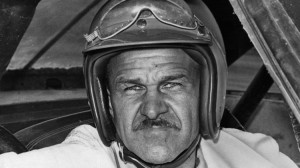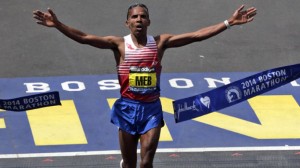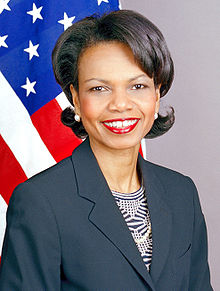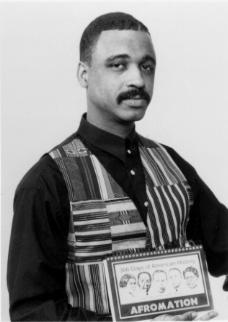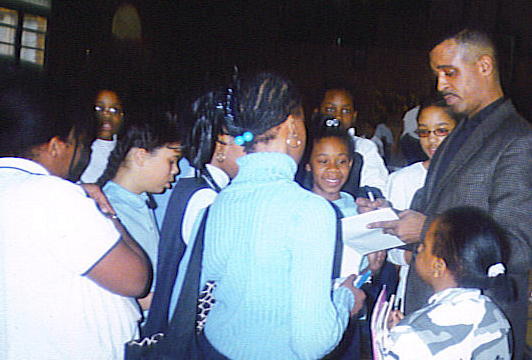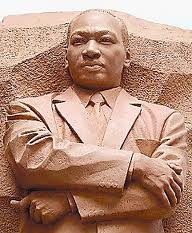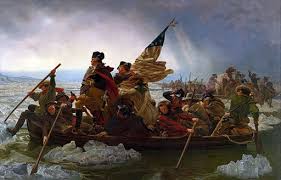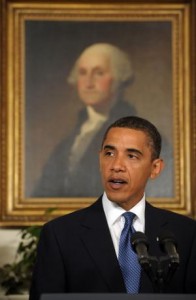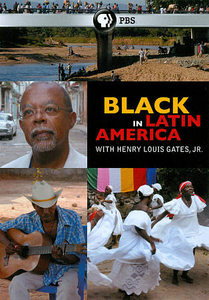 First, could you talk a little bit about this project?
First, could you talk a little bit about this project?
I conceived of this as a trilogy of documentary series that would mimic the patterns of the triangle trade. There would be a series on Africa which was called Wonders of the African World in 1999. And then there would be a series on black America called America Behind the Color Line in 2004. And then the third part of the triangle trade was, of course, South America and the Caribbean. The triangle trade was Africa, South America, and the continental United States and Europe. That’s how I conceived of it. I’ve been thinking about it since before 1999. But the first two were easier to get funding for. Everyone knows about black people from Africa, everyone knows about the black American community. But surprisingly, and this is why the series is so important, not many people realize how “black” South America is. So of all the things I’ve done it was the most difficult to get funded and it is one of the most rewarding because it is so counter-intuitive, it’s so full of surprises. And I’m very excited about it.
And why do you think there is a lack of knowledge about the black populations in Latin America?
Well, incredibly, there were 11.2 million Africans that we can count who survived the Middle Passage and landed in the New World, and of that 11.2 million, only 450,000 came to the United States. That’s amazing. All the rest went south of Miami as it were. Brazil got almost 5 million Africans. In part, this reflects our ignorance as Americans who don’t know that much about the rest of the world. But also, it is in part the responsibility of the countries in South America themselves — each of which underwent a period of whitening. In the hundred year period between 1872 and 1975, Brazil received 5,435,735 immigrants from Europe and the Middle East and this was a conscious policy after 1850 to “whiten” Brazil which was such a black country. Brazil is the second blackest nation in the world. Brazil has the second largest black population — black being defined by people of African descent in the way that we would define them in this country. It’s second only to Nigeria. But no one knows this. So it’s those two reasons, that the countries themselves went through long periods of being embarrassed about how black they were and secondly, our own ignorance. That’s why this series is so important. It’s meant to educate Americans, and people in Europe and the rest of the world, but it’s also meant to educate people in South America, too. And in each of these countries there is a political campaign against racism, for affirmative action, and for their right to exist where they don’t as census categories. For example, in Mexico and Peru, they are fighting for the right to be identified as black. As in France, many people in these countries thought that if you put that social identity in the census that it reinforces racism. But doing that also prevents people from organizing around race when they are discriminated by race. It’s a paradox. And it’s fascinating to see what is similar and dissimilar in each of these countries.
For Black in Latin America you visited Haiti, the Dominican Republic, Cuba, Brazil, Mexico, and Peru. How did you choose to focus on these particular six countries?
Well, we had to pick a country that reflected quite dramatically the history of the slave trade. So the largest countries with the biggest black populations are Brazil and Venezuela. So that was one category. We divided all the countries into categories. We only had four hours. We couldn’t do all the Caribbean and all of South America. We had to come up with criteria. So category one is size. Brazil’s the largest country in South America and it’s Portuguese-speaking, so that was interesting. Second, we wanted to do something representative from the Caribbean.
Haiti just had the earthquake, it was very much in the news. Every night for months I would watch Anderson Cooper talking about the earthquake. But never did Anderson Cooper or anyone else talk about the history of Haiti. They’d talk about voodoo as if it was lunatic superstitions rather than one of the world’s old religions. Most journalists didn’t write anything sophisticated about the history of the revolution. And no one talked about the fact that it was at the western end of an island with another country, the Dominican Republic, and that the two of them had created their identities together and in opposition to each other. So it’s like Jacob and Esau, Yin and Yang. They’re both there on that island, separated by a river, and they’re very different countries. One is Spanish, Catholic and white, as it’s fond of saying. The other is African, black and voodoon. So we’re going to lead off the airing of the series with the Haiti & Dominican Republic program.
Cuba is a slam dunk. Everybody wants to know what’s going on in Cuba. And Fidel Castro, two years after he had his revolution in 1959, he announced that racism had been eliminated in Cuba. And Cuba got almost 800,000 slaves — far more than the United States. So there’s a fascination with Cuba: Our nearest neighbor. Miami’s twin city. How black is Cuba? Is there racism? Did the revolution, which brought health benefits and education to poor people, eliminate racism? That’s the question we ask. You can get the answer because the name of the episode is The Next Cuban Revolution.
And then finally Mexico and Peru. If Havana is the twin city of Miami, Mexico is our twin country. No one thinks of Mexico and Peru as black. But Mexico and Peru together got 700,000 Africans in the slave trade. The coast of Acapulco was a black city in the 1870s. And the Veracruz Coast on the gulf of Mexico and the Costa Chica, south of Acapulco are traditional black lands. Here’s the punchline, Barack Obama the first black president in the New World? No way. Vicente Guerrero in 1829. Mulatto, just like Barack Obama. First President of Mexico.
All these countries have curious things for this hidden history. The Dominican Republic says “We’re black behind the ears.” And in Mexico, “there’s a black grandma in the closet.” They know, they’ve just been intermarrying for a long time. But if we did the DNA of everyone in Mexico a whole lot of people would have a whole lot of black in them.
The series reveals how huge a role history can play in forming a nation’s concept of race. Although each of the countries you visited has its own distinct history, did you find any commonalities between the six countries with regard to race?
Yes, each country except for Haiti went through a period of whitening, when they wanted to obliterate or bury or blend in their black roots. Each then, had a period when they celebrated their cultural heritage but as part of a multi-cultural mix and in that multi-cultural mix, somehow the blackness got diluted, blended. So, Mexico, Brazil, they wanted their national culture to be “blackish” — really brown, a beautiful brown blend. And finally, I discovered that in each of these societies the people at the bottom are the darkest skinned with the most African features. In other words, the poverty in each of these countries has been socially constructed as black. The upper class in Brazil is virtually all white, a tiny group of black people in the upper-middle class. And that’s true in Peru, that’s true in the Dominican Republic. Haiti’s obviously an exception because it’s a country of mulatto and black people but there’s been a long tension between mulatto and black people in Haiti. So even Haiti has its racial problems.
In your opinion, if you visited other countries in Latin America you would see those commonalities coming out as well?
Yes. Again, these are representative. Typical. And I think that they typify the larger experience. I would hope we could get funding to do another series.
How do you feel the race experience differs between Latin American nations and the United States?
Whereas we have black and white or perhaps black, white, and mulatto as the three categories of race traditionally in America, Brazil has 136 kinds of blackness. Mexico, 16. Haiti, 98. Color categories are on steroids in Latin America. I find that fascinating. It’s very difficult for Americans, particularly African-Americans to understand or sympathize with. But these are very real categories. In America one drop of black ancestry makes you black. In Brazil, it’s almost as if one drop of white ancestry makes you white. Color and race are defined in strikingly different ways in each of these countries, more akin to each other than in the United States. We’re the only country to have the one-drop rule. The only one. And that’s because of the percentage of rape and sexual harassment of black women by white males during slavery and the white owners wanted to guarantee that the children of these liaisons were maintained as property.
And what’s amazing is that they can keep track. I’m thinking of the scene in Brazil where the group of men listed the different racial classifications that describe their skin color.
It’s like they had a color meter. “Oh this person is Caboclo.” I cracked up. That was a brilliant scene. I set that up, I told the crew just to follow me. And we walked through the market with me asking people what color I was and we had a lot of responses and then we picked the best one. But the best one was those guys when we put the hands in the circle. And then they all said “I’m Negro, I’m Negro” and then I said “No really, what are you?” And they go “I’m Cabocla, He’s Moreno.” It was great.
Could you discuss a few events during the making of the series that you found particularly powerful?
Well, there were many. Discovering that people in Latin America had been worshiping two black saints since the 1600s. That was astonishing. Discovering that the first Barack Obama in the New World was a Mexican, Vicente Guerrero. Learning that the Cuban Army of Independence was over 50 percent black and that two of its leaders were black generals including Antonio Maceo. But I think the most moving person I met was a Catholic Priest named Father Glyn Jemmott who works in the Costa Chica South of Acapulco on the Pacific in the blackest area of Mexico. He’s a Trinidadian. He’s been a parish priest there for 25 years. And he’s a black man. And his goal is to get people into Heaven. And to help them understand that they’re black and that’s a good thing. And he’s a humble man. He does it for the love of God and humanity. I found interacting with him a deeply spiritual experience.
Which of the countries do you most want to go back to visit and why?
I love them all. It’s like a mother and her children. I want to go back to each of them. But I was particularly fascinated by Cuba. Cuba is like going to a whole other planet. It’s so different but it’s so similar to the United States, to Miami. It’s like a doppelgänger. It’s the mirror image. And I have no doubt, that once Cuba becomes democratic, that it will be the favorite tourist destination for Americans. The people are all waiting for democracy and capitalism to come and I hope that that happens very soon. I mean I wish that Fidel Castro would wake up one day and decide he wants to be the George Washington of his country and institute one person one vote and open the country up.
 The irony is that Mr. Scott’s hue was a dozen or so shades lighter than the East African-born Mr. Keflezighi. Hmm, can you say passe blanc? My mother posed a thought-provoking question; did the stock car racing associations know Mr. Scott was “African-American” back in the sixties when he was racing?
The irony is that Mr. Scott’s hue was a dozen or so shades lighter than the East African-born Mr. Keflezighi. Hmm, can you say passe blanc? My mother posed a thought-provoking question; did the stock car racing associations know Mr. Scott was “African-American” back in the sixties when he was racing? 